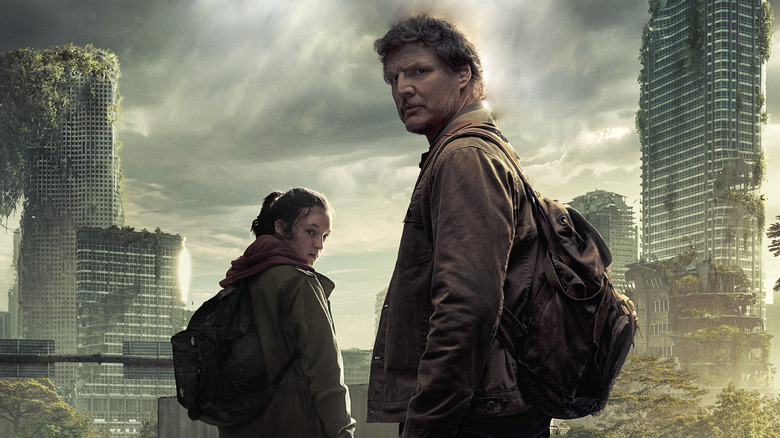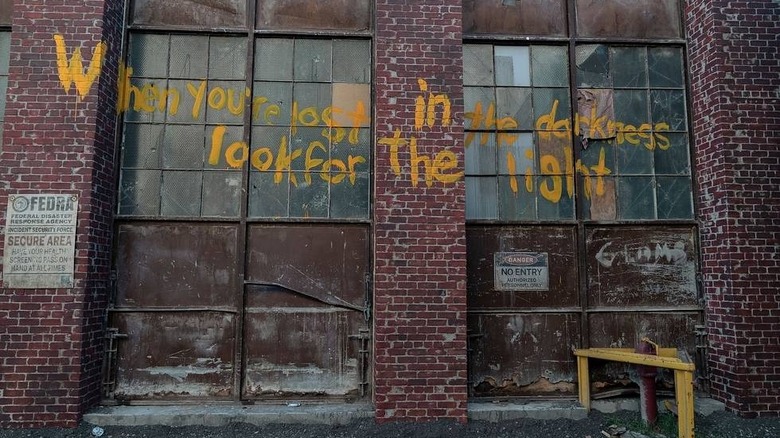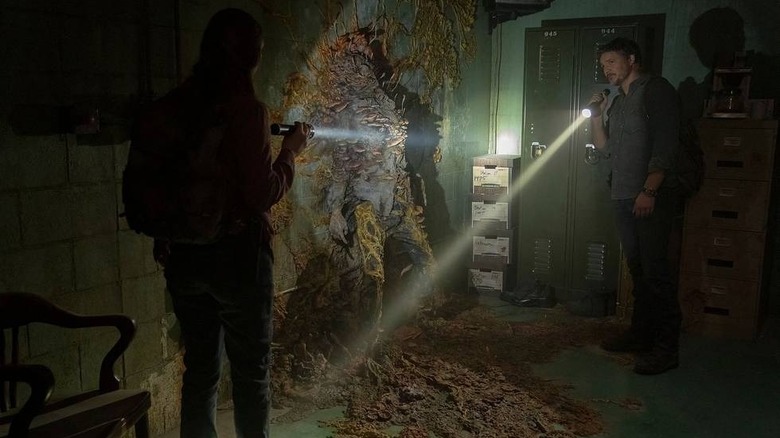Gabriel Luna Could Walk For Blocks And Still Be On The Set Of HBO's The Last Of Us
After years of development, HBO's "The Last of Us" is finally almost here, and it already looks like a largely faithful adaptation of the beloved video game series. Every sign points to the nine-episode season covering the vast majority of the original story, sparing no details in the process. Thankfully, it doesn't seem like HBO spared any dollars, either. The production quality practically leaks through the screen in the limited trailer footage we've gotten so far. The video game franchise is known for its detailed world-building, and the show won't be cutting corners in that department.
"The Last of Us" is often heralded as the pinnacle of video game storytelling for its dark and deeply emotional narrative. However, the world around it is a vital part of the player's experience. As the story progresses, we get to intimately explore the corners of the many locations Joel and Ellie visit during their journey. The deterioration of society is exemplified by the grass-ridden, rusty surface of the land that once saw a thriving population. According to Gabriel Luna, who plays Tommy, the brother of Pedro Pascal's Joel, the set of HBO's "The Last of Us" was about as expansive as any hardcore fan could hope for.
'I could walk for blocks'
/Film's Ben Pearson attended a roundtable interview for "The Last of Us" in which Luna revealed his experience walking on the very large set as a fan of the original game:
"[Playing] Ghost Rider, obviously, [I had] dots all over my face, motorcycle shroud with lights on it, just a lot of green screens. ['Terminator: Dark Fate'], definitely lots of green. Just living in a world of a pure imagination. And "The Last of Us," to my absolute delight, was real, was there, was full 360 sets. I could walk for blocks and still be on our set. I could see and touch things that I've seen in the game. Details that –- I'm the kind of person that ... is very exploratory when I experience these games. I mean, you can walk up to a wall and just stand there and look at the texture and the decomposition of the wood or the colors of the fungus. That's me."
Although visual effects will be used to bring the larger-scale elements to life (collapsed buildings, cities, etc.), it's very exciting to hear real-life sets were used to fill out the immediate world. As a fan of the source material, examining the minute details while traveling through Boston and across the United States is an experience unlike no other. Truthfully, "The Last of Us" is at its best when it is able to transport us into an alternate reality through the surrounding environment.
World-building at its finest
One of the best parts of the video game is exploring the post-apocalyptic world for all of its nooks and crannies. From the start of Joel's journey with Ellie, we get a close look at a fallen society grasping at straws to survive. The overrun grass and vines that cover every building are complemented by random notes and letters that contain nuggets of information. People wrote about losing loved ones, their final moments, lost hopes and dreams, and other depressing ideas that emphasized just how far gone the world was.
HBO's live-action adaptation is expected to differ from the game in some aspects, but that world-building is vital to capturing the spirit of that original experience. Changing what worked without good reason rarely pans out in video game adaptations. Thankfully, it's becoming clear that "The Last of Us" wants to accentuate the best aspects and deliver a faithful recreation that recaptures the essence of its predecessor.
"The Last of Us" is set to premiere January 15 on HBO and HBO Max.


